
In my recap of the first week of this Giro d’Italia, I wrote that British interest ended after Stage 1. That turned out to be a bold and not very great prediction because turned out Tao Geoghegan Hart won the thing.
Testing, testing, 1, 2, 3…
The Giro recommenced after the first rest day in somewhat diminished form.
Following Simon Yates’ departure from the race, four members of Mitchelton-Scott team staff tested positive for Covid-19 and the team withdrew. Overall contender Steven Kruijswijk also tested positive and so Jumbo-Visma pulled out as well. Points classification contender Michael Matthews left for the same reason – although the rest of his team continued.
As the week wore on, a few riders voiced dissatisfaction with the race organisers and one team – EF Pro Cycling – even suggested that they should accept that this year’s Giro was going to end early one way or another and just cancel the final week.
In the end, the race made it to the finish, the last few days perhaps masking the fact that it wasn’t really a vintage edition.
Whether it was the start list, abandons or coronavirus, this Giro seemed to be diminished at every turn. Even the racing seemed to lack ambition with a sense among the riders that if you could just make it to the finish, you’d probably get a decent result.
Racing-wise, this is where things stood after the first week. Joao Almeida was leading overall with Tao Geoghegan Hart 2m41s back in 17th place and the man who would turn out to be his closest rival, Australian Jai Hindley, just 1m15s off the lead in ninth.
Meanwhile Arnaud Demare was frustrating Peter Sagan in the points competition. Let’s quickly cover that first.
Points mean prizes (a special jersey, specificially)
Despite the inauspicious start to the day, Stage 10 was, in fact, pretty good. Peter Sagan got into the break, smashed his way over some short, steep climbs and rode away to take his first victory since last year’s Tour de France.
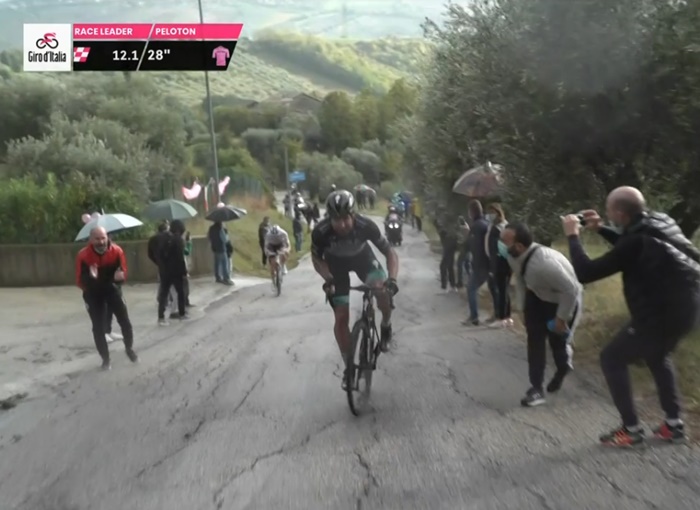
Sagan wasn’t at his best in this year’s Tour and some feel he’s on the slide. You have to remember that he’d already committed to riding this Giro though – a race that started just a few weeks after the Tour.
My feeling is he peaked for neither, going into the Tour ‘fresh’ rather than ‘fit’ in the knowledge that he had a huge block of racing ahead of him before being unavoidably a bit overcooked in Italy.
The day after Sagan’s win, Arnaud Demare won his fourth stage and that’s kind of where the points competition ended.
At that moment Demare was on 220 with Sagan on 184. At the end of the race the Frenchman was on 233, while Sagan hadn’t added a single point. No-one else got past them.
The overall: week 2
On Stage 10, Jakob Fuglsang – who I thought at the time was the form rider – lost more than a minute after a mechanical on the final descent with 10km to go. He’d go on to lose ground in the time trials too and nor was he tearing away from people in the mountains. His experience was a reminder that for all that this race wasn’t the grandest Grand Tour, there’s no such thing as an easy win in a three-week race.
The next significant engagement was the middle time trial of Stage 14, which was chiefly notable for American rider Brandon “Who?” McNulty vaulting from 11th to fourth overall after finishing third behind current world time trial champion, Filippo Ganna, and last year’s world time trial champion, Rohan Dennis (who would go on to become a very significant figure in the final week).
A day later and McNulty was back to 11th thanks to the Stage 15 summit finish. Encouraging the notion that there was some sort of 4th-11th portal in operation, Ineos Grenadiers’ young Grand Tour project, Geoghegan Hart, swapped places with him by winning the stage.
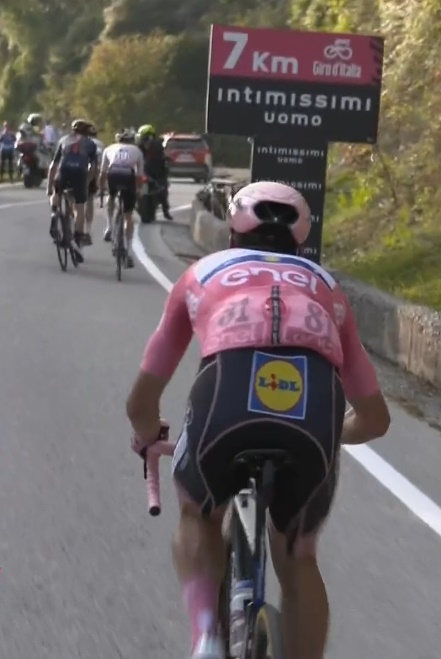
Geoghegan Hart has been around for a while and has managed some decently-solid stage race results since moving to Ineos in 2017. He is still only 25 though – “an old soul in a young body,” according to his former coach, Axel Merckx.
Set alongside Tadej Pogacar’s win in the Tour de France, you wonder whether the 20-somethings have had a better year this year because they’ve been more comfortable playing/training on Zwift.
Team Sunweb’s Wilco Kelderman and Jai Hindley were the other two in the front group on Stage 15. The former closed to within 15 seconds of race leader Joao Almeida, who couldn’t quite hack the pace, while the latter floated up from 10th to 7th.
The overall: week 3
Despite that revelation of fragility, Almeida held on to his lead through some tough stages at the start of the third week.
Stage 17, for example, featured over 5,000m of climbing in 200km. To put that in perspective for those of you who for some reason consider Box Hill to be some sort of significant obstacle – that basically amounts to scaling the Surrey climb 40-odd times.
Stage 18 was even harder though and this is where things changed.
The 24.5km 7.4% Stelvio with its 48 hairpin bends was the centrepiece, if not actually the final climb.
Halfway up it, Almeida lost the Giro.
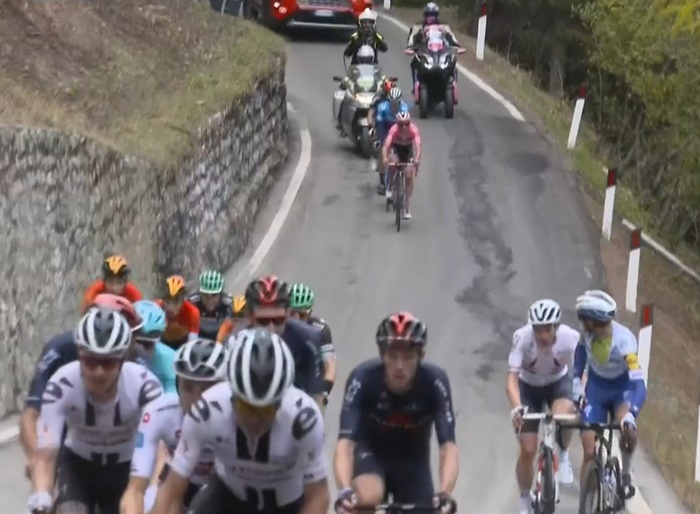
Most of the damage was done by Ineos Grenadiers’ Rohan Dennis, attempting to set things up for Geoghegan Hart.
In fact the Australian pared the ‘favourites group’ back to just three men: himself, Geoghegan Hart and Hindley.
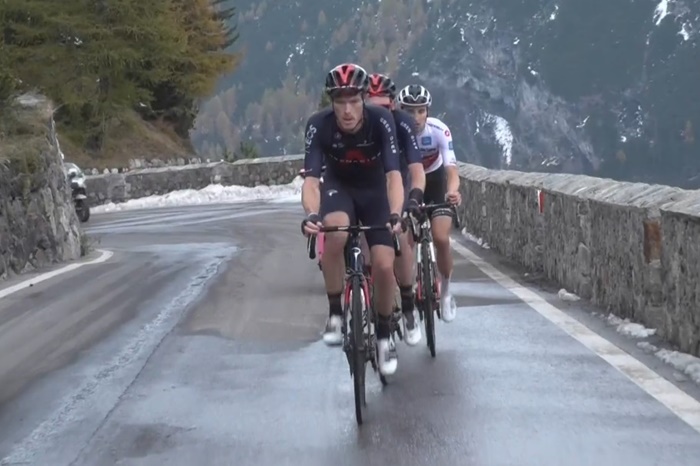
Far and away the most exciting part of the climb was when Hindley spent somewhere around 45 minutes trying to put his jacket on.
That’s what it felt like anyway. With Dennis pushing on at a speed only two riders could match, the young Australian rode for several hundred metres and a number of hairpins with one arm in and one arm out.
Every time there was a stretch of straight road, he’d have a stab at getting Arm Two in and again and again he failed.
At one point he very nearly crashed.
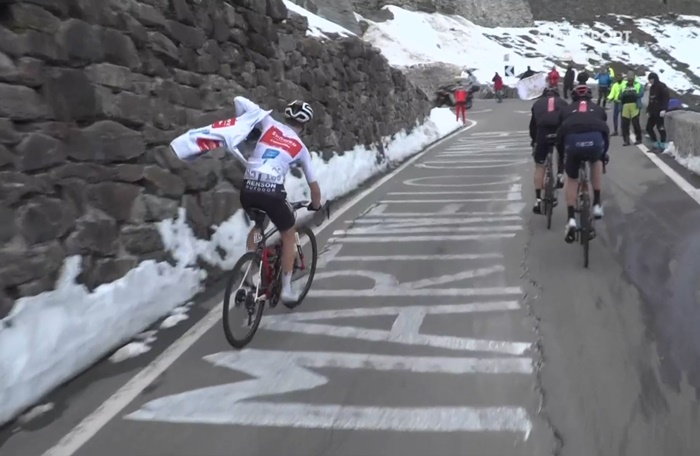
In the end, neither he nor Kelderman chasing behind ever managed to successfully fasten their jackets.
Kelderman got so fed up that he slat his away and descended through the snow and biting wind at 100km/h without it.
Come the bottom, he was frozen solid and Fuglsang and others blew straight past him. Then he defrosted and started pegging everyone back again.
Come the finish, Hindley took what was surely a most unwelcome sprint finish ahead of Geoghegan Hart.
Kelderman lost two minutes but thanks to his advantage at the start of the day that gap was (just about) small enough to earn him the race lead.
Remarkably, those three riders – Kelderman, Geoghegan Hart and Hindley – were left separated by just 15 seconds. No-one else in the race mattered any more.
Stage 19 was most notable for the riders cycling through the neutral zone before climbing back into their team buses to be driven to a new start line 100km further along the route. With long bus transfers at both ends of each stage, they’d been starting and ending their days in the dark. A third successive 200km stage in dreadful weather was too much and the race organisers succumbed to their threat to go on strike.
Stage 20, in contrast, was a big deal from a cycling perspective.
Shorn of two French climbs for coronavirus reasons, the route was altered to include three ascents to Sestriere instead.
On the second trip up, Dennis reprised his Stelvio trick, accelerating so that only Hindley and Geoghegan Hart could follow.
It’s not a complicated tactic. He just rides really fast and hardly anyone can stay with him.

Dennis towed Geoghegan Hart and Hindley to the top, down the descent, across the valley floor and then almost all the way back up again.
Despite being just about the strongest rider in the final week, the Australian finished over two hours back in the general classification after treating the first two weeks as glorified training. “I tapered yesterday,” he said before the Stelvio stage.
Dennis is an interesting one in that he seems to have the physical ability to contest a Grand Tour but probably not the temperament. His epic wobbler at last year’s Tour de France is just one of many examples. Team staff speak of incredibly exacting requirements and he is not possessed of what you’d call an easy-going, roll-with-the-punches mentality.
As just one example, he says that he always takes steps in multiples of five, “so I’ll take a couple of small steps to make a ten if it’s going to be eight.”
He does this with pedal strokes too. “Say it’s a bridge and I get to the end of the bridge and I’m going to have, like, nine… Change gear, make a quicker cadence, make it ten.”
He does this in races. For the whole day.
This particular decimation on Stage 20 wasn’t as smooth as it looked. “I over-fuelled,” he said about how he’d felt with 45km to go. “I was burping and bringing a bit of stuff up.”
Finally, with about 1.5km to go, Dennis’s two trailers became dragsters and shot off.
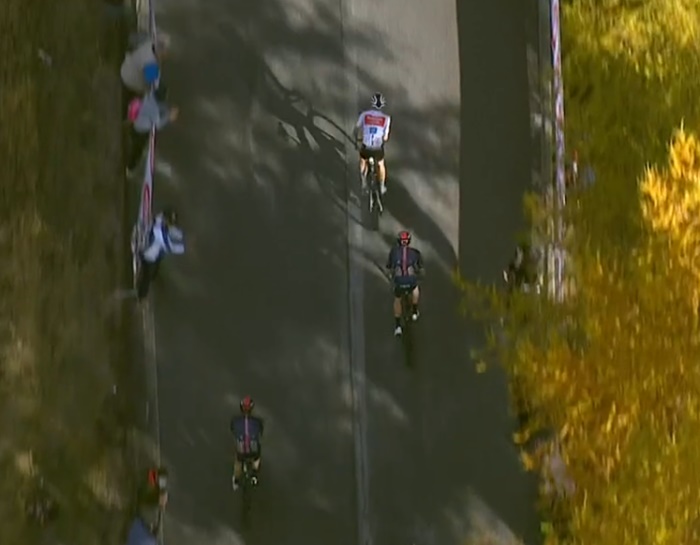
This time Geoghegan Hart crossed the line first. And that was important because the time bonus meant that with just the final time trial to go, he and Hindley were actually on the same time – after 20 days of racing, the latter was deemed to be in the overall lead by just hundredths of a second.
The situation was insanely simple: whoever did the better time trial on Stage 21 would win the Giro d’Italia.
Geoghegan Hart did the better time trial.
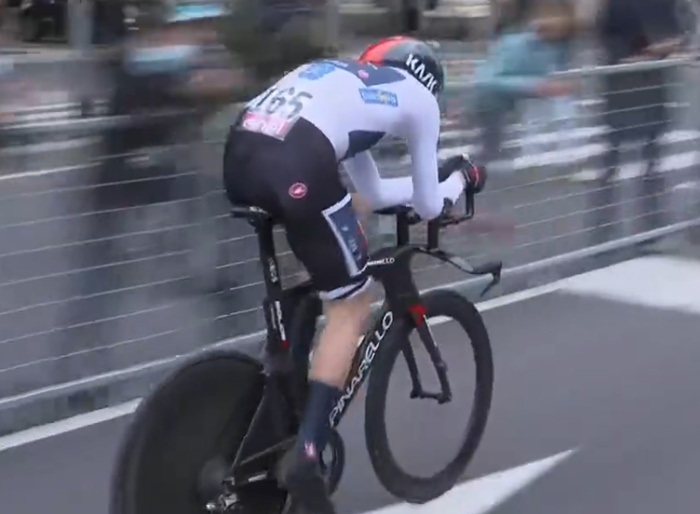
Final standings
1 – Tao Geoghegan Hart (Team Ineos Grenadiers)
2 – Jai Hindley (Team Sunweb) at 39″
3 – Wilco Kelderman (Team Sunweb) at 1’29”
4 – João Almeida (Deceuninck – Quick-Step) at 2’57”
5 – Pello Bilbao (Bahrain – McLaren) at 3’09”
What’s next?
We’re already six stages into the Vuelta a Espana. I’ll recap the first dozen stages this time next week.
Please sign up for the email if you want to hear about that. That piece and the final week recap that will follow it will be the last updates on this site until next season.
Leave a Reply